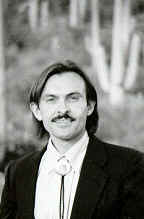An interesting dialectic emerges as part of sundance. How much should we suffer? How far should we push ourselves? One young man pushed himself to almost heat stroke. He wanted to be perfect . He collapsed on the fourth day. I suggested to him that it is important to accept the compassionate offerings of others for their benefit than to hold out to be perfect and not be able to complete the ceremony. It is more important to respect our limits even as we try to transcend them and to finish, than to strive so far beyond our limits that we fall upon our face before the dance is done. Of course, this is a metaphor for life as well. All of sundance can be seen as metaphor for life which is why it such a powerful therapy for those with addictions and mental illness. It is powerful because it is so entirely embodied. In sundance as in life, we must take responsibility for marshalling our energy. Some kind of natural competetiveness probably comes into play as well, though it is stressesd that this is not meant to be a contest but a personal spiritual journey individual to each dancer..
I saw further proof that the dance, and the good red road it represents,works incredibly well for recovering alcoholics, people with addictions, and people with (so-called) mental disorders. He or she who can embrace the intense physicality of the ceremony can transform mind and spirit through the simultaneous transformation of the body. So much of psychology is so "cerebral", seemingly disconnected from body. The dance is entirely embodied. We feel the thirst. We cope with the pain. We find that we can transcend and go beyond who we thought we were. This embodied spirituality leads to transformation and transcendence.
I am so happy that this ceremony is largely now available for all. We had people at our dance from every continent except Australia and Antartica. I believe that this is the fulfillment of His Crazy Horse's prophecy that the Lakota spirituality would be adopted by the children of the conquerers and would provide them with the wisdom for healing and sustainability that they lacked. I had more conversations about blood quantum, a recent favourite topic of mine. A young Oneida man who was taking Native Studies at his university had actually studied the Blood Quantum Act of the U.S. Congress. He confirmed my understanding that the definition of Native American as a race was designed by the U.S. government to eliminate "Indians". My young friend had actually been to the Smithsonian and seen the formula and calculations for when Indians would cease to exist based upon blood quantum. He believes that tribes are Nations and should have their own procedures for deciding citizenship, just as the U.S. government has a test one must pass along with other procedures to decide who is a citizen. A Nation is not defined by a race, he said.
Re-entry was most difficult. I returned to my three day per week job at a community mental health center. Compared to the profound healing power of the dance, our activities at the community mental health center seemed like so much paper shuffling. Nothing real happened. People and paper shuffled from place to place without any change. I have resolved to work hard to stay in the ceremonial spirit of mind for as long as I can. I am finding it easier to cope with the chaos of community mental health because I am finding ways to create meaning within it. Ceremony works because it is simultaneously and intensely mind, body, spirit, and community, in one synthesized, integrated whole. Contemporary mental health does not work because it is separated mind from body, body from spirit, spirit from community. In our clinic, we never see relationships or families. The model is entirely individualistic. We send the children to the child and adolescent clinic to get "fixed" while their parents attend the "adult" clinic to get "fixed". Never is the parent-child interaction addressed. Never are the family transactions considered as avenues toward "craziness". Generally speaking, everyone gets medication regardless of the diagnoses, and typically the same medications. What does this tell us? That the dance brothers and sisters who have made it, are making it well conpared to a terriblle mindset of starting and stopping.
My "New Year's Resolution", for sundance represents the end of one year and the beginning of a New Year for me, is to take the peacefulness, love, compassion, kindness, and gratitude of the dance, and try to bring it into the mental health system. The more I can do that, the happier I will be.




